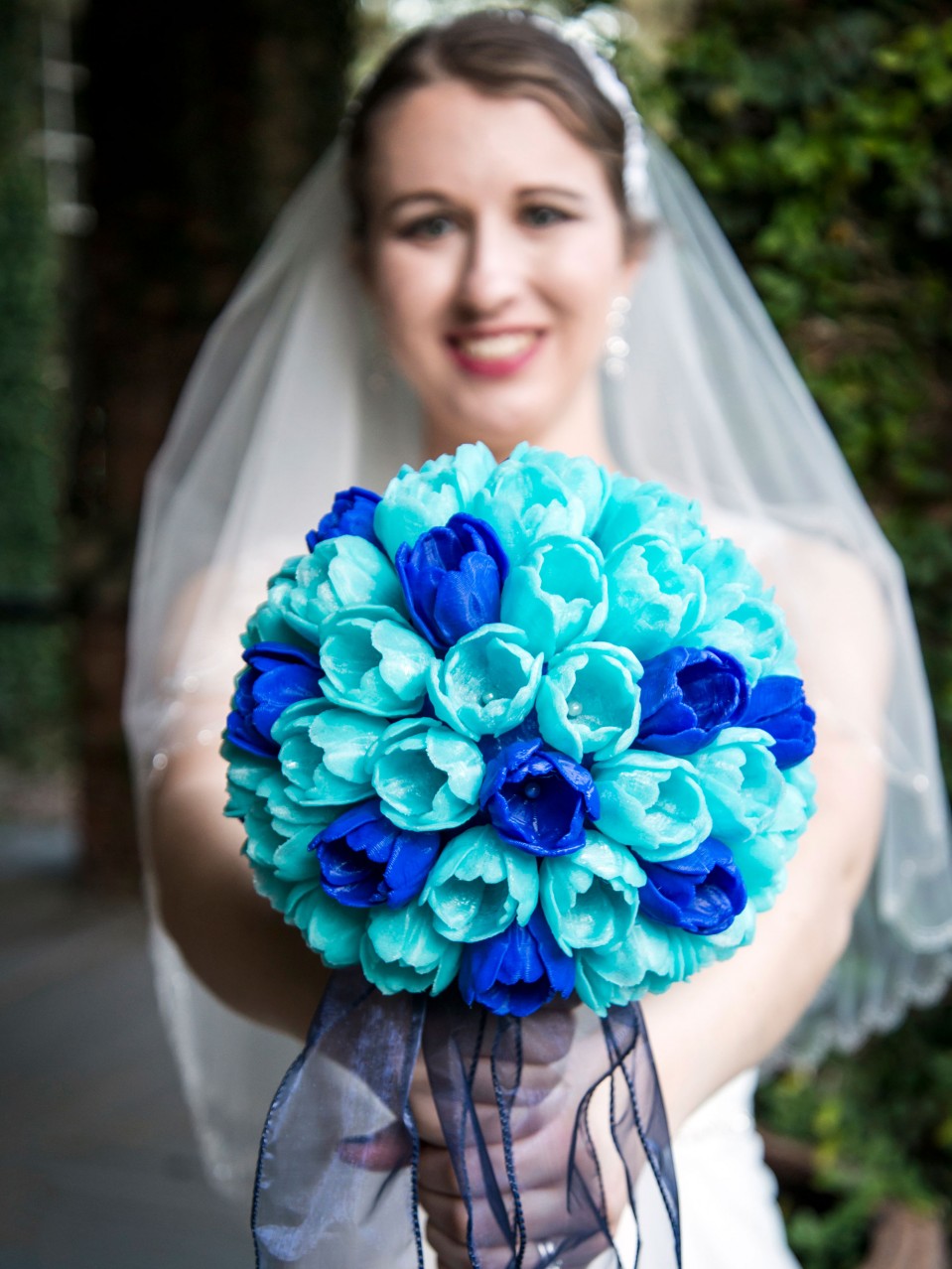Future of Work / 3D Printing
I 3D-printed every bit of my wedding—including my bouquet
The maker community helped me create everything from my bouquet to my cake toppers—and gave me an insight into the technology’s possibilities.



If there are three things I’m known for here at MIT Technology Review, it’s my love of 3D printing, my science fashion, and my nerd cred (the latter is quite a claim here at MIT, where nerd cred is universally high).
So when it came to planning my wedding, the traditional route was definitely not for me. I have a mechanical engineering background and have owned a desktop 3D printer for the past three years, so the chance to combine my passion for manufacturing with a huge life milestone was too tempting to pass up. That meant infusing 3D printing into the day everywhere I could.
For those unfamiliar with how most desktop 3D printers work, it involves melting down rolls of plastic filament at high temperatures. The machine moves around in a pattern laid out according to a model that was designed on a computer, extruding plastic in a process similar to that used in a glue gun. It puts down thin layers, one at a time, to build the shape. The technology helps both manufacturers and at-home makers construct intricate creations.
Whenever there was a choice between making and buying something, I went for the 3D-printing option. I printed my headband, the bouquets for me and my bridesmaids, all the table numbers, the cake topper, the floral cake decorations, and the flower girl’s necklace. All this was carried out on my two desktop printers, Mini and Flash (yes, I have named my printers).
Like many other DIY and hobbyist projects, it allowed for a deep connection to the things I created. 3D-printed items have a personal touch you don’t get from purchasing something at the store.
While the technology hasn’t become as widespread as it was hyped to be about five or 10 years ago—3D printers aren’t in every home quite yet—manufacturers and a community of makers are continuing to support its growth. According to the 2018 Wohlers Report, the industrial additive-manufacturing industry grew 21% in 2017.
And the growing maker community is big on sharing: sharing advice, final products, and especially 3D models. Many websites like GrabCAD, Thingiverse, MyMiniFactory, and Pinshape allow makers to publish the models of their creations for others to download, print, and remix as well.
I pulled the models of the tulips for the bouquets and cake decorations, and the Lego Minifig cake toppers, off Thingiverse. I adapted this model of a leaf created and uploaded by 3D-printer company Makerbot to make my headband. Lastly, I designed the flower girl’s necklace and all my table numbers from scratch in engineering modeling software, SolidWorks.
So really, while I may have 3D-printed everything, many parts of the maker community came together to support my wedding. And in turn, I’m contributing back by uploading my table numbers and remixed leaf model to Thingiverse as well. If you have a wedding coming up, I would be honored if you would use the table numbers as part of your centerpiece (you can download them here).
The project that took the largest amount of time was the bouquets (don’t worry, I didn’t throw mine—I didn’t want to risk knocking out one of my friends with a big spiky plastic ball). I printed all the approximately 200 flowers individually on my machines with blue and glow-in-the-dark plastic filament. In all I spent more than 100 hours, over the course of many months, pumping out flowers whenever I could after work and on weekends. I then arranged them on styrofoam balls using traditional floral-arranging pins and glue.
While newer, more expensive printers could have probably completed all my projects faster, I was working with machines priced around the $900-$1,300 mark that I purchased about two and three years ago. But I believe I’m speaking for many others in the maker community when I say making is not all about speed and efficiency. It’s about what you have the power to accomplish with your own tools and talents.
And the final product was more than worth all that effort. I received compliments throughout the night on my bouquet from family members, many of whom had followed along on Instagram as it took shape. Engaged friends were even saying they might steal a few ideas for their own ceremony. Other guests were shocked to find out my headband was 3D-printed, saying they assumed I’d bought it.
I can’t leave out another motivation of DIYing the wedding, which was saving money. Keeping costs low wherever we could was a top priority for us as a young couple. Since I already own two 3D printers, making these things required only a small investment: in total I spent around $75 on all the bouquets. When you consider that the average cost of a bride’s bouquet alone is about $150, and each additional bridesmaid arrangement is about $75 more, that’s a bargain. 3D printing still may not be cheap enough to put up a huge fight against traditional mass production, but when it comes to wedding costs, it actually starts to look like a good deal.
For me and my fiancé, 3D printing also brought a chance to customize our celebration to our personalities. We are both makers at heart. By focusing on 3D printing, I was able to custom-design our wedding and create a physical representation of what we plan to do next: make a life together.